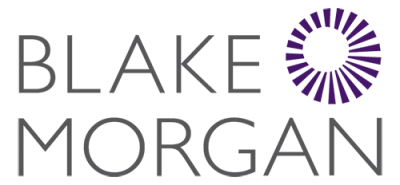Copyright law is being challenged by disruptive technologies such as AI and blockchain, themes explored by our Partner Simon Stokes in the recently published fifth edition of his book, Digital Copyright.
Artificial intelligence and virtual reality
The rise of artificial intelligence (AI) and virtual reality (VR) are starting to pose significant challenges to how we conceive and apply copyright. This is because copyright law is rooted in two significant assumptions. Firstly, that there is an author in relation to the work – but what about a computer-generated work? UK law acknowledges that a computer-generated work is a work generated by a computer in circumstances such that there is no human author of the work and this can still be protected by copyright. The “author” here is “the person by whom the arrangements necessary for the creation of the work are undertaken”. But other countries don't necessarily take the same view.
Secondly, in UK law at least currently, for a work to be protected by copyright it has to fall into one of the statutory definitions of a copyright work – a literary work, artistic work and so on. This application of categories continues to raise issues for works which cannot be neatly categorised - virtual works can include a range of material – code, audiovisual presentations, interactive elements and so on.
The current law on computer-generated works dates back to viewing computers as simply human tools. But machine learning and other powerful new AI techniques challenge this assumption.
Unless computers eventually become “persons” in their own right, for now at least there seem to be at least two options in applying copyright law to computer-generated works – either there is no copyright protection at all (because there is no human author) or an approach similar to the UK one is followed and the programmer (or other person who has made the arrangements necessary to create the work) is the author. Certainly the UK approach is pragmatic as it protects the investment companies make in AI. However, this approach is still problematic and somewhat simplistic as what account is taken of how the user might interact with the program, the IPR that may subsist in the data used to train the algorithms used, and indeed the IPR in the algorithms themselves?
Blockchain and copyright
Blockchain is a rapidly developing technology that can best be described as a form of digital ledger that is shared and distributed (so that each participant has a duplicate copy) – it can facilitate the recording of transactions and the tracking of assets. The ledger is secured through the use of cryptography and is immutable. Blockchain owes its name to how it stores transaction data – in blocks that are linked together to form a chain. Blockchain can also be used to develop “smart” contracts, ie an agreement or set of rules that apply to a transaction – it is stored on the blockchain and is executed automatically as part of a transaction. For example a smart contract might contain a set of rules for how a digital copyright asset such as a digital photograph is licensed. Bitcoin is also an example of the use of blockchain. Blockchains can be public or private.
Because blockchains are immutable ledgers of data they have an obvious use in copyright rights management. Metadata on ownership and other aspects of the digital copyright asset can be stored on the blockchain. A smart contract can be used to automate who has access to the asset and under what conditions. The blockchain platform can also handle remuneration through for example the use of a cryptocurrency like bitcoin. It therefore has the potential to revolutionise how digital copyright assets are exploited.
But some have also suggested that copyright could become redundant if content is managed through blockchain and smart contracts. There would be no need for it, although there must remain a risk of piracy.
Another issue blockchain raises is that the autonomous, resilient and tamper-resistant features of blockchain pose challenges if blockchain is used for unlawful purposes such as illicit file-sharing. In practice it may be very difficult to prevent such infringing activity.
A longer version of this post was first published in the Internet Newsletter for Lawyers March/April 2019 and is based on sections from Simon's book – Digital Copyright: Law and Practice (Bloomsbury/Hart 2019).









